This rare tropical plant might seem intimidating because of stunning it looks, but we promise you that the Cissus discolor is anything but intimidating! If it’s easy enough for me, I promise you can master it too.
Read on for more information on this amazing plant, as well as an ultimate care guide to raising the perfect Cissus discolor.
Table of Contents
Cissus Discolor Vine Background
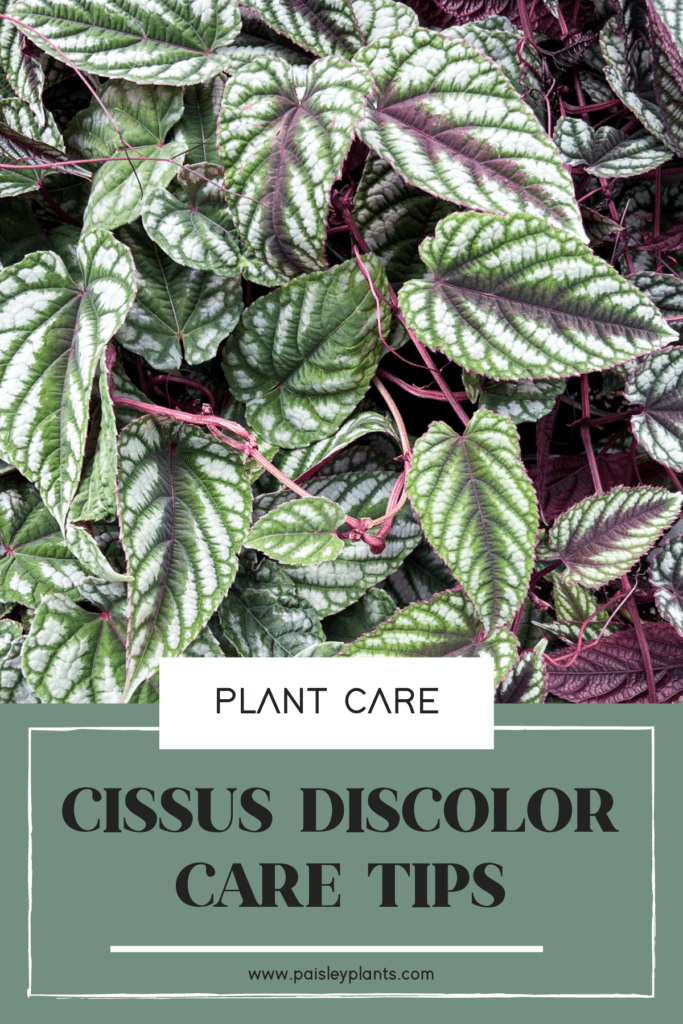
This post includes affiliate links.
Originally native to the Indonesian island of Java, the Cissus discolor is a houseplant that will be a statement in any home! Another common name for the Cissus discolor is the climbing rex begonia vine.
While the Cissus discolor is very similar to an original rex begonia, these are two separate plants and are not interchangeable. In fact, the Cissus discolor is more closely related to a peperomia and piper.
The Cissus discolor has a very similar leaf pattern to that of the rex begonia. Its long, heart-shaped leaves have light and dark green mottling combined with the violet-red underside of the leaves.
At full maturity, they can get really long! You can expect these plants to reach 6 to 8 feet long.
The Cissus discolor is not toxic to humans or animals, so you can safely own one of these plants even with curious pets and children in the household.
Cissus Discolor Care
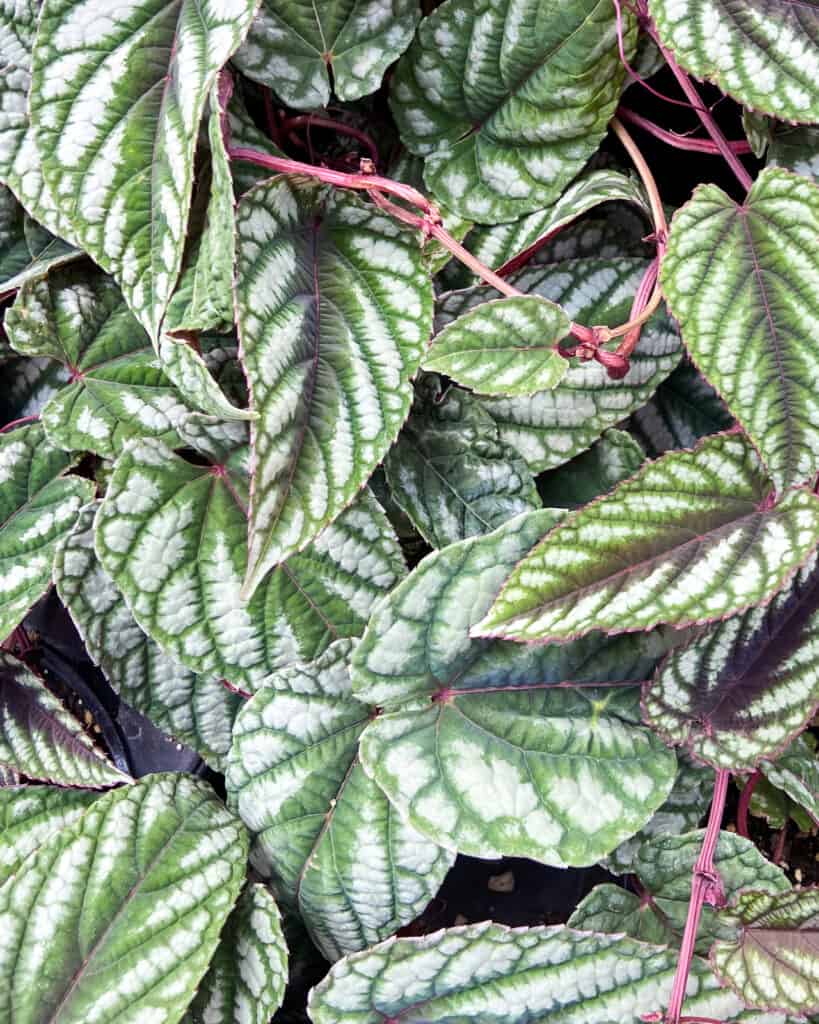
Let’s chat Cissus Discolor care tips and tricks!
Sun & Light
The Cissus discolor vine requires a full day of bright, indirect light in order to maintain its appearance. Direct sunlight can cause significant harm and damage to the sensitive leaves of these plants. You can putt these just out of reach of direct sun or shield them from the sun through a sheer curtain.
Not enough light can cause the silvery color of the plant’s leaves to revert.
Soil Type
The perfect soil for growing your Cissus discolor in should have these few qualities:
- Well-draining
- Nutrient-dense
- Slightly acidic (6.0 to 7.0)
Soils that are loamy or sandy also work very well for this particular plant. You can use standard store-bought potting mixture, but we recommend increasing the drainage of your soil by incorporating more perlite into the mix.
Water for Your Cissus Discolor Plant
These plants adore a soil that is lightly moist, but not over-saturated with water. A good rule of thumb is to wait until the top 2 to 3 inches have dried out prior to giving your plants more water.
You may find yourself having to water your plants more often during the spring and summer, and less in the fall and winter depending on where you live.
Fertilizer
Your Cissus discolor will absolutely benefit from a regular fertilizer treatment during its active growing period. Select a balanced liquid fertilizer that is specially tailored towards houseplants. Feed your plant once every month during the spring and summer.
We always recommend following the directions on the package. All fertilizers are different and improperly using a fertilizer can result in a burnt plant, or worse.
Avoid fertilizing your Rex Begonia vine altogether during the fall and winter. At this time, your plant will be dormant and have no use for fertilizer. The unused fertilizer eventually lowers the pH level until it becomes uninhabitable for the plant. You can resume during the growing season (early spring to late summer).
Temperature & Humidity
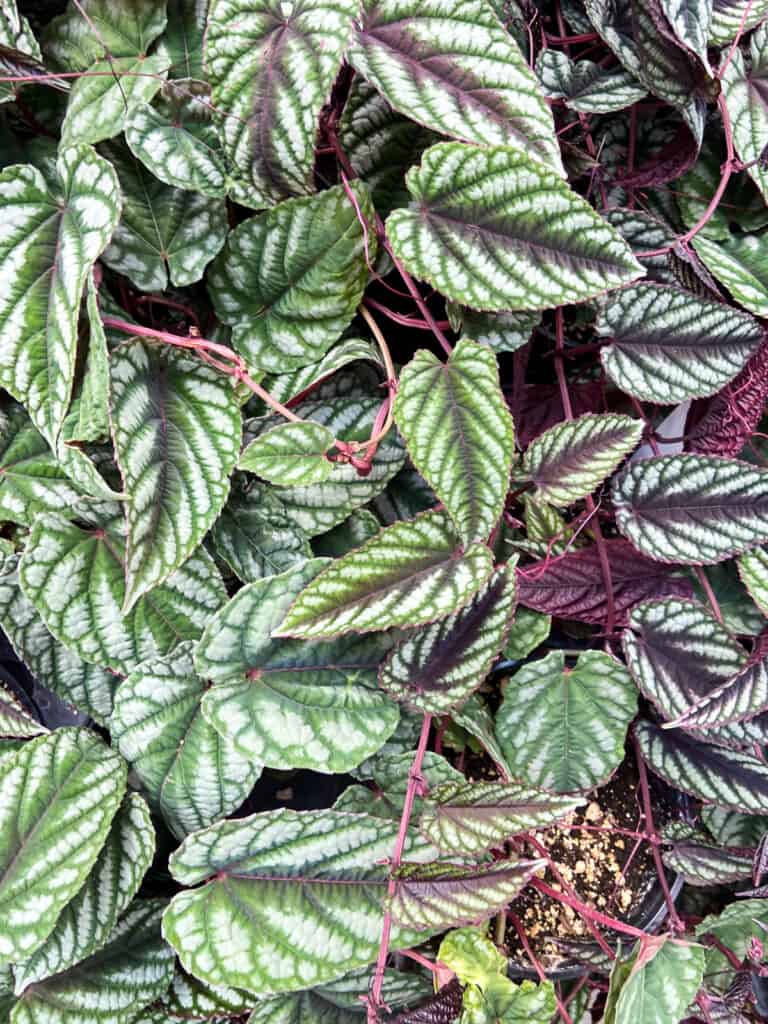
As a plant that is native to the tropics, the Cissus discolor thrives on a warm and humid climate. The ideal air temperature range for this plant is between 65° and 80° F. Avoid allowing the air temperature to sink any lower than 60°, avoiding air conditioning ducts or drafty windows.
The humidity level for these plants should be high. A good range would be somewhere around 60% to 70% humidity.
When wintertime comes around, avoid placing your Cissus discolor near heating vents where the humidity tends to be the lowest in the home.
If you are concerned about getting enough humidity for your plants, we suggest placing an electric humidifier in the same room. Alternatively, you can also place a tray of moist gravel underneath the plant; the natural evaporation with humidify the plant’s area.
Pruning & Maintenance
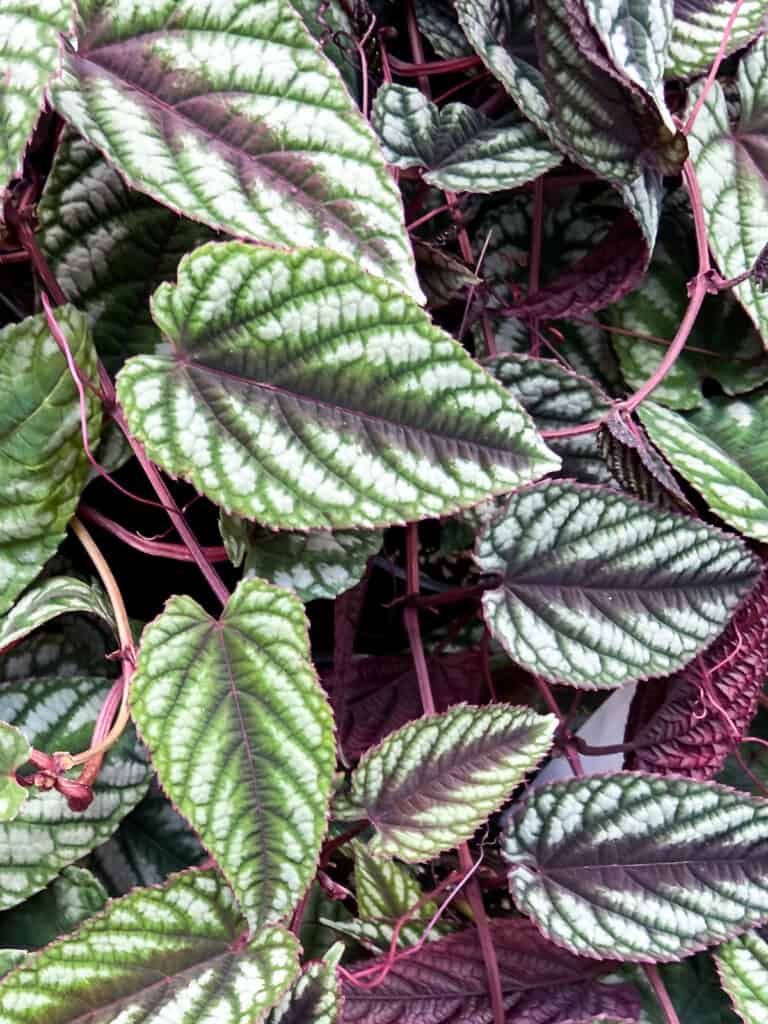
The Begonia Vine plant does not require frequent pruning and can be done as you see fit. We always recommend trimming any foliage that has become dead or damaged. By removing these pieces, you’ll allow your plant to redirect its energy into developing new, fortified growth.
You may also notice it becoming sparse or leggy over time. This can easily be fixed by pruning some of the vines, leading to a bushier vine.
Choosing a Container & Repotting
When selecting a plant pot to house your new plant in, it is important to select a pot that has multiple drainage holes. Drainage holes allow excess water to freely exit the plant pot, which helps keep your plant’s soil comfortable, but not waterlogged.
The Cissus does not enjoy being repotted and it should only be done in necessary cases. You’ll find yourself having to repot it every 2 to 3 years. When the time comes to repot, select a planter that is slightly larger than the previous container.
How to Propagate Cissus Discolor
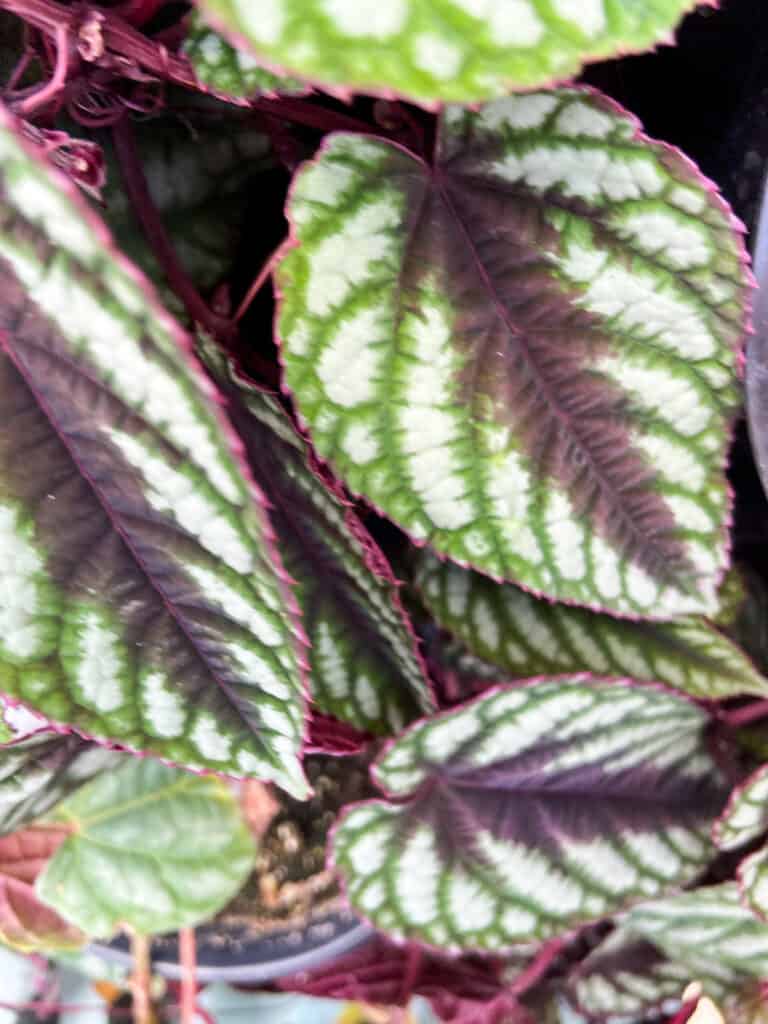
Your Cissus can be propagated by rooting stem cutting into water. You can also propagate Cissus Discolor plants directly into soil, but I prefer water propagation so that I can visually see the process of roots forming.
Check out some of my favorite propagation stations here!
To propagate your Cissus discolor, follow these steps:
- Select a branch to cut. This cutting must be healthy and mature. You’ll notice some of the vines are woodier than others; this is the one that you want. Young branches are unlikely to propagate successfully.
- Trim the vine cutting, leaving 1 to 2 leaves at the top of the vine and exposing the nodes.
- Place the cut-end of the vine into a small jar of water, making sure that the remaining leaves are still above the water.
- Place the jar in a location with bright, indirect light and change out the water every few weeks to avoid bacteria. It takes about a month to notice roots forming.
- When the roots are at least 1 inch in length, transplant your cutting to a plant pot that is filled with well-draining soil.
- Maintain an even soil for the next 2 to 3 weeks while your cutting takes its time to get used to being an established plant.
Common Pests
Whiteflies are a very common pest that is associated with the Cissus discolor. Whiteflies can appear on their own; as their name clearly suggests they are small white flies that swarm your plant.
While you may not notice flies yet, they also tend to leave egg nests on it as well. Be vigilant for small white eggs on or near your plant.
While whiteflies are an absolute nuisance in your life, they can easily be treated with multiple rounds of insecticide. A natural, yet effective, insecticide is neem oil.
Spritz the plant using neem oil and wipe down the foliage in order to deter the existence of flies. You may have to repeat this step 2 to 3 times before the flies are completely gone.
In addition, if you notice physical flies, yellow sticky tape strategically placed around the plant can help eradicate many whiteflies.
Common Diseases
By far the most common disease that affects plants is root rot. And unfortunately, the Cissus discolor is capable of becoming a victim to this detrimental disease.
The excess moisture that is trapped within the root system can cause the roots of the Cissus discolor to corrode and rot, which will slowly kill the plant itself. If your plant is wilting and the leaves are discolored, these are telltale signs of root rot.
Luckily, root rot can be easily treated as long as it is caught early. Follow these steps in order to treat your plant:
- Remove the plant from its pot and inspect the root system. Rotten roots are soft in texture and have turned near-black from the rot.
- Using a sterile pair of shears, cut away at all signs of rot. Please be sure that you are handling these roots carefully as the Cissus discolor has a delicate, thin root system.
- When all rot has been cleared, repot your plant in a sterile plant pot that has multiple drainage holes. Fill the planter with a well-draining soil.
For the next couple of weeks, keep the soil lightly moist to lessen the risk of shock.
Where to Buy
FAQ
Yes, the Cissus Discolor plant is considered to be rare. On the bright side, propagating these plants are very easy and straightforward. Once you own one Cissus, you can use its vines to reproduce multiple plants of your own.
The Cissus discolor is by far one of the most gorgeous houseplants available. While they are a rare plant to behold, caring for them is exceptionally easy!
Want more unique looking plants? Check out one of these!

